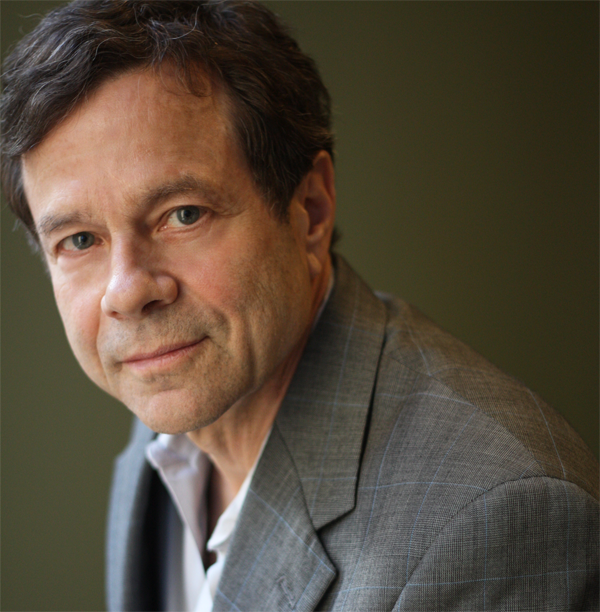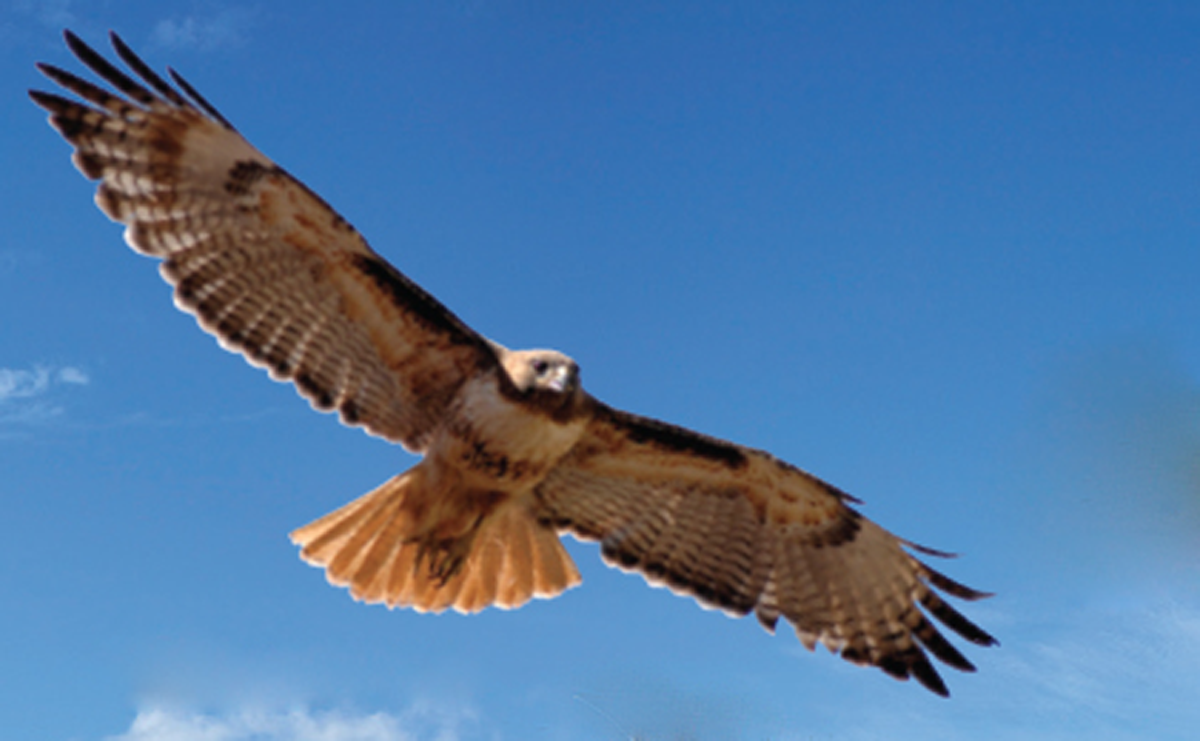If Birds Can Fly,
Why, Oh Why, Can't I?

Human physical capacity is greatly restricted by natural laws, nowhere better illustrated than by our inability, despite vigorous and patient flapping of the arms, to fly. But the problem here is not simply the lack of wings. Scale up a pheasant to the size of a man and it would plummet to earth like a rock. Or consider Icarus. In the very plausible picture of him in my childhood mythology book, each attached wing equals his height and is about one quarter as wide—not unlike the graceful proportions of a swallow. Unfortunately, to fly with those wings the boy would have to beat his arms at one and a half horsepower, four times the maximum sustained output of an athletic human being. Icarus and Daedalus may have been willing to utterly exhaust themselves in their aerial escape from Crete, but most of us would like to go with better equipment.
Weight, shape, and available power all play a part in the science of flying. Let us begin with the most obvious requirement to fly: a lifting force must counterbalance the weight of the animal in question. That lift is provided by air. Air has weight and, at sea level, pushes equally in all directions with a pressure just under fifteen pounds per square inch of surface. To achieve lift, an animal must manage to reduce the air pressure on its top surface, thereby creating a net pressure pushing upward from below. Birds and airplanes do this with properly formed wings and forward motion. The curvature and trailing edge of a wing force the air to flow more rapidly over its top side than its bottom. This causes a net upward pressure in proportion to the air density and to the square of the forward speed, a basic law of physics deriving from the conservation of energy. Thus with every doubling of the speed comes a quadrupling of the lift pressure. No motion, no net lift pressure. Likewise, birds couldn’t fly on the moon, where the air density is essentially zero. (Under the moon’s reduced gravity, however, creatures could jump six times as high as on Earth, which might be a happy substitute.)
Once you’ve got your lift pressure of so many pounds per square inch, you want to have out as many square inches of wing as practical. For example, a lift pressure of a hundredth pound per square inch (obtained by flying at about thirty-five miles per hour) pushing on a wing area of 400 square inches will yield a total lift force of four pounds, enough to buoy the weight of the average bird. There is a convenient tradeoff here: the necessary lift force can be had with less wing area if the animal increases its forward speed, and vice versa. Birds capitalize on this option according to their individual needs. The great blue heron, for example, has long, slender legs for wading and must fly slowly in order not to break them on landing. Consequently, herons have a relatively large wingspan. Pheasants, on the other hand, maneuver in underbrush and would find large wings cumbersome. To remain airborne with their relatively short and stubby wings, pheasants fly fast. Illustrating with some actual numbers, which I got by telephone from a helpful man at the Audubon Society who happened to have the birds in his office, an average great blue heron weighs in at six and a half pounds and projects a wing area of about 800 square inches, while a typical pheasant has three times the weight to wing area. However, the pheasant flies at a brisk fifty miles per hour, twice the speed of the heron.
How a bird propels itself forward, without propellers, is not obvious. This mystery was clarified in the early nineteenth century by Sir George Cayley, father of the modern airplane. (Leonardo Da Vinci spent years studying the art of flying and may well have understood the propulsion of birds, but his notes went undiscovered until a hundred years ago and, as typical, were left unfinished—although he did, as legend has it, launch one of his pupils from Mount Cecere in a flying contraption, which promptly crashed.) Birds, in fact, do have propellers, in the form of specially designed feathers in the outer halves of their wings. These feathers, called primaries, change their shape and position during a wing beat. On the down-stroke they move downward and forward; on the upstroke, upward and backward. The primary feathers, operating on the same physical principles as the rest of the wing, produce their lift in the forward rather than upward direction.
Flying, like other physical activities, costs energy. A frictionless bird, having attained level flight and satisfied with its course, could glide forever, without moving a muscle. All the flapping, and expense of energy, is made necessary by air drag. Depending on a craft’s aerodynamic design, the drag force is something like a twentieth of the lift force. To counteract drag, a cruising heron must pay out energy at the grudging rate of a fiftieth of a horsepower, leaving behind its calories in the form of stirred up pockets of air. Heavier birds of the same proportions have to use even more power for each pound of weight. Quadruple a bird’s dimensions in every direction, keeping the shape identical, and its weight and volume increase by 64 times, while the power required to fly is 128 times larger. The only way around this law is to change shape. For example, if you hold the total volume (and weight) fixed, but increase the wing area four times, you can fly with half the power. For the long flights in migration, birds save power by flying together in formation, each member in the rear partially boosted by the rising air current trailing the next bird up and taking turns in the lead positions. But for solo flight, weight and shape inescapably determine the power needed to fly. These are the facts of life for aviation.
We now turn to biology, where we find that, pound for pound, living creatures are highly inefficient at producing useful power compared to internal combustion engines. A human being can maintain a maximum mechanical power output of only about one two-hundredth that of an engine of the same weight. For biology to reach twelve horsepower, the output of the little engine on the Wright brothers’ 1903 airplane, requires the services of an elephant.

The predicament of limited biological power lessens, however, as we proceed to smaller and smaller size. Lighter animals have more power for each pound of weight than heavier ones. Begin with a 450-pound horse, which has at its disposal one horsepower. Now reduce the weight of the animal. For every fifty percent reduction of weight, it is found that the power available for work diminishes by only forty percent. By the time you’re down to less than an ounce, you realize the 4,000 mice that weigh the same as a man have nine times the total power. Embarrassing perhaps, but not unexpected. Unlike most engines and machines, the muscles in animals generate more heat than useful work. Since heat production cannot be sustained at a greater rate than the animal can cool, and cooling is generally accomplished via the skin surface, animals will produce heat, and mechanical power, approximately in proportion to their surface area. The ratio of power output to weight, therefore, is close to the ratio of surface area to volume. It is then simple mathematics that smaller objects have greater surface area to volume than larger ones. (Very small animals do have their own drawbacks, like the obligation to eat for most of the day, but that’s another story.)
Now, as the power needed to fly increases more rapidly with increasing weight than the power generally available—unless some spectacular change in body shape is effected—lightweight creatures clearly have the edge for flying. Nature seems quite appreciative of this struggle between physics and biology. Although birds have been experimenting with flight for one hundred million years, the heaviest true flying bird, the great bustard, rarely exceeds thirty-two pounds. The larger, gliding birds such as vultures, lifted by rising hot air columns, do not carry their full weight. The 300-pound ostrich never leaves the ground, apparently having chosen sheer bulk rather than flight for defense.
Very small animals do have their own drawbacks, like the obligation to eat for most of the day, but that’s another story.
Never having seen a 200-pound bird aloft, the British industrialist Henry Kremer must have felt his money “safe for a long time when in 1959 he offered a prize of £5,000 for human-powered flight. In 1973, after many serious but unsuccessful attempts by Britain, Japan, Austria, and Germany, the Kremer Prize was increased to the equivalent of $86,000. According to the strict rules of the offer, as set up by the Royal Aeronautical Society of England, a winning flight would have to traverse a figure eight around two pylons half a mile apart, never touching earth, and cross the start and finish point at least 10 feet above the ground. And, of course, the human pilot would have to furnish the power.
On August 23, 1977, in Shafter, California, an athletic young man climbed into a fragile, ungainly craft named the Gossamer Condor, strapped his feet to a pair of bicyclelike pedals connected to a propeller, and captured the prize. The flight lasted about seven and a half minutes.
What Paul MacCready, the designer of the craft, had done was to create an extraordinarily lightweight structure of enormous wingspan. To keep the wing as light as possible, it was fashioned from Mylar stretched over aluminum struts, with piano wire for bracing and cardboard for the wing’s leading edge. The entire craft, including fuselage and wing, weighs seventy pounds. To this you have to add the weight of Bryan Allen, 135 pounds. Allen is approximately six feet tall; his wing was ninety-six feet long and ten feet wide. Never has Mother Nature conceived a flying creature remotely approaching such disproportions. For numerical comparison, the pheasant has a wing area per mean body area of just over one, the heron has five, and the great bustard has thirteen. The Gossamer Condor (with pilot) has a wing area per mean body area of ninety.
In many ways, human beings circumvented the difficulties of aviation long ago, at Kitty Hawk. And internal combustion engines date back even earlier. But in our dreams, when we soar into the air to escape danger or to simply bask in our strength, we fly as birds, self-propelled. It may be awkward to imagine ourselves installed with one hundred feet of wing, but that’s what Nature asks, to fly like a bird.
Comments? Please send your responses
on the site's Contact page.Thank you!
